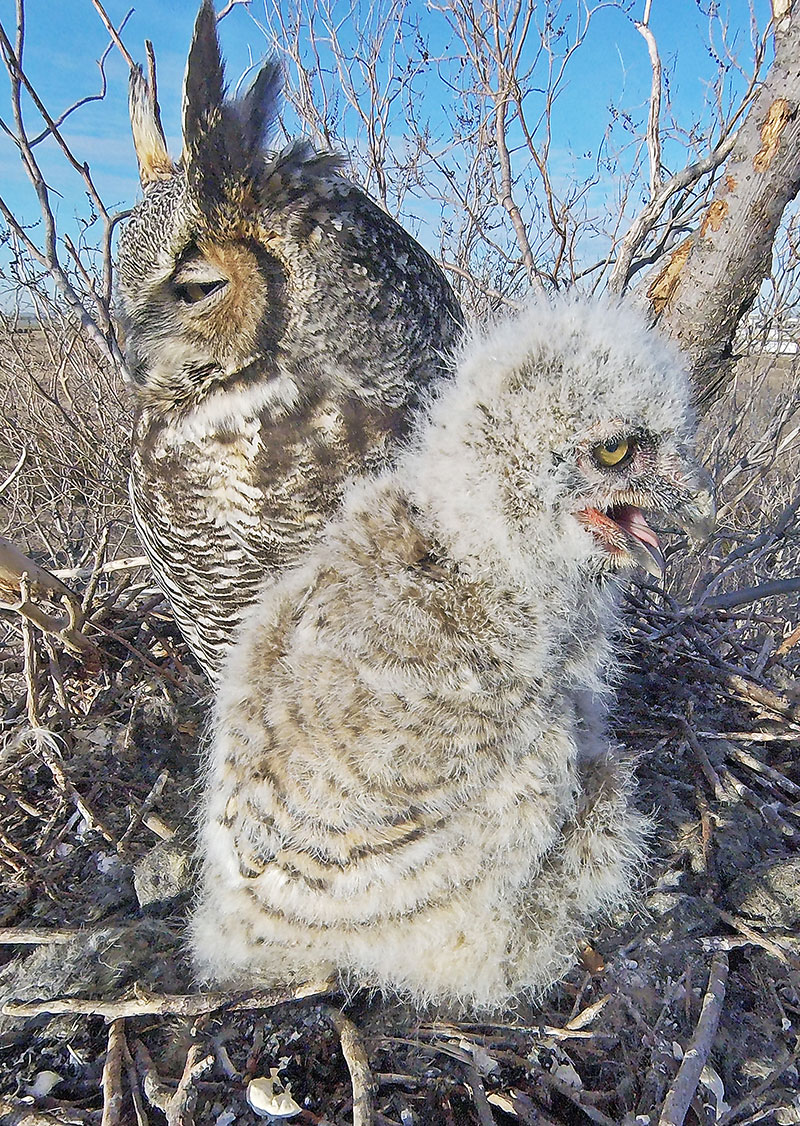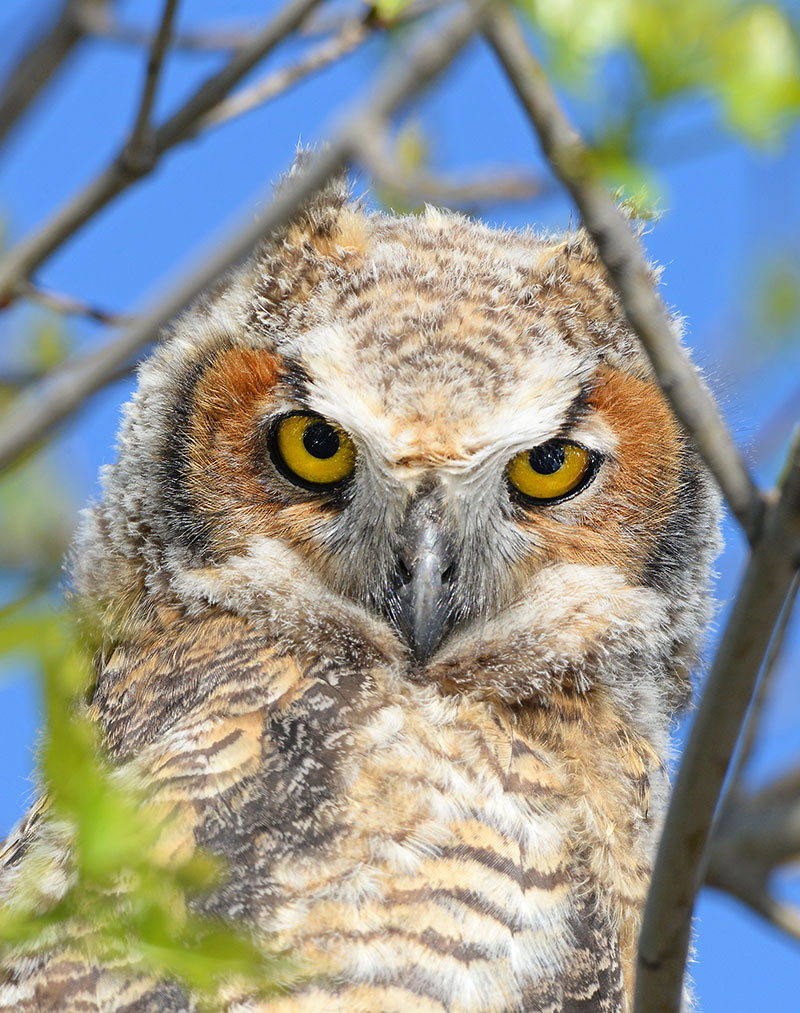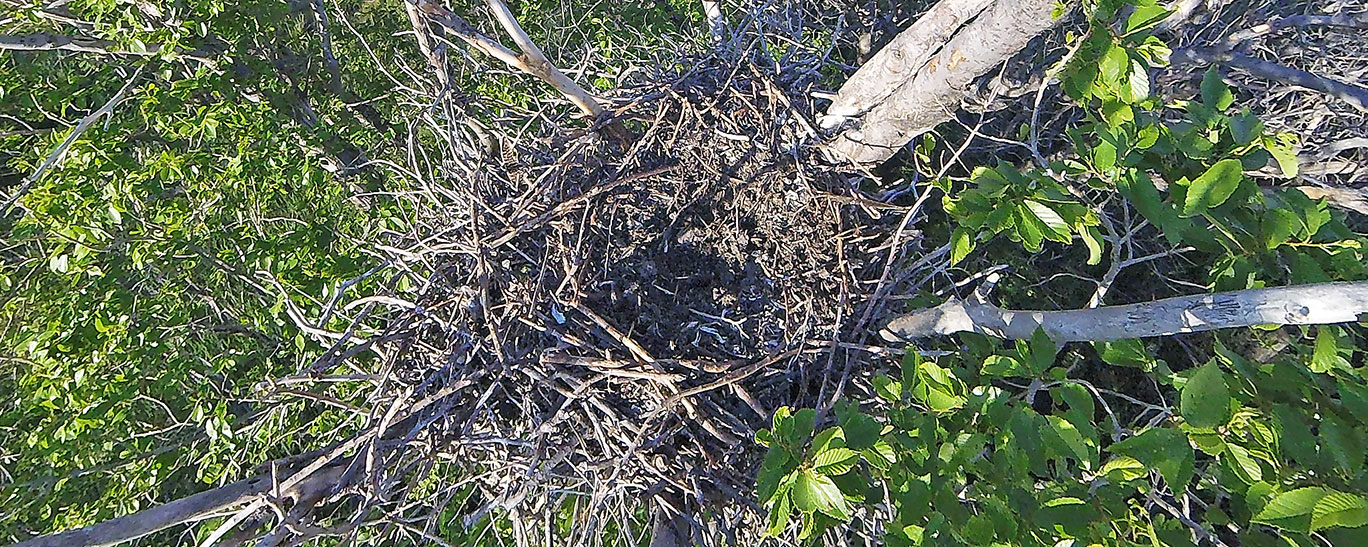
Empty Nest
On February 8, when temperatures for the day started below zero and slowly climbed into the single digits, a great horned owl, a mature female, settled into a hand-me-down nest constructed of mostly sticks.
Her mate, a smaller raptor, with the same widely spaced feathered ear tufts that gives the owl its name, was likely perched nearby, scanning the terrain with its haunting yellow eyes.

A young, fuzzy great horned owl, with an adult in the background.
The nest, located about 30 feet up a tree, weeks away from sprouting leaves, overlooked the north parking compound at Game and Fish Department headquarters in Bismarck.
The great horned owl, a year-round resident of North Dakota, is one of the state’s earliest nesters. Seeing one hunkered stoically in a nest while it’s definitely still winter, and spring seems so far away, is not unusual. Yet the sight does provide pause as to the owl’s indifference to the weather and questionable timing.
Great horned owls are opportunistic in their nest selection, picking one that was built, occupied and then abandoned by another species. And, considering their early jump on the nesting season, competition for a place to lay eggs and fledge young without doubt isn’t fierce.
“When you are one of the earliest nesters, and there is always an empty raptor nest around somewhere, then you get your pick,” said Sandra Johnson, Game and Fish Department conservation biologist.
The nest selected by the great horned owl pair was constructed two to three years ago, and occupied last summer by Swainson’s hawks.
Egg incubation duties were left to the mature female owl. If not for her feathery warmth, the eggs would certainly have succumbed to freezing temperatures.
After hatching, the duty of providing prey for the two downy, and mostly homely young, was left to the male.

One of two great horned owls hatched and raised on Game and Fish Department property, surveys its new surroundings.
“The male typically brings the food to the nest and the female teaches the young how to feed,” Johnson said. “The male was likely catching voles, probably cottontail rabbits, birds and other prey.”
The male’s hunting ground, you’d have to imagine, was mostly the Department’s Outdoor Wildlife Learning Site, which consists of acres of quality wildlife habitat.
Great horned owls are terrific hunters. They fly silently from perch to prey, thanks to feathers that are ragged on the ends. They do most of their hunting at night, but when times are lean, like in winter, they will hunt during the day.
While scientists say that a female great horned owl can lay from one to six eggs, the Department’s backlot nest had two young.
A month or more after hatching, the fledged young were able to fly from the nest on their own, beginning a chapter that included catching their own food.
“They didn’t leave right away after they’ve fledged,” Johnson said. “Like a lot of raptors, they hung around the area with the adults.”
Today, as has been the case for weeks, the nest is empty.
Watch some video of the female great horned owl and her young

